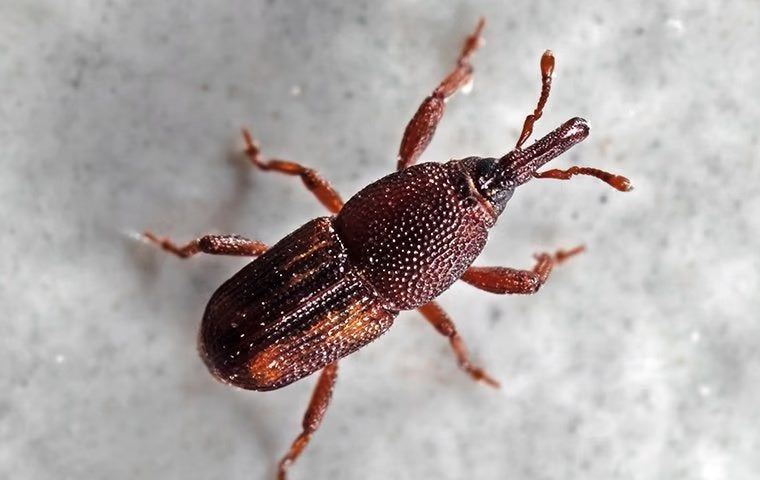
Rice Weevils Identification & Prevention
Frequently Asked Questions about Rice Weevils
Have questions? We are here to help. Still have questions or can't find the answer you need? Give us a call at 252-424-7966 today!

-
How can I prevent rice weevils in the future?
Pests are not just a nuisance; they pose potential health risks and are capable of damaging property. Avoid problems with rice weevils with the help of the following prevention tips.
- Inspect food packaging for holes or rips before purchasing.
- Remove grains from their original packaging and place them in glass or plastic containers with air-tight lids.
- Rotate dry goods in the pantry, getting rid of old or expired items.
- Never mix partial containers of grains together, as this could spread an infestation.
- Place weather-stripping around windows and doors.
- Repair torn screens.
- Replace white outdoor light bulbs with yellow or LED bulbs that are less attractive to insects.
-
How do I get rid of rice weevils?
Getting help from a professional home pest control expert is the best way to control rice weevils and keep them from returning. At Albemarle Termite & Pest Control, our technicians are highly trained and dedicated to providing safe and effective pest control services in Elizabeth City that are affordable. We are a local pest control company whose number one priority is putting our customers first and exceeding expectations. For home or business owners looking to control pests on their property once and for all, call Albemarle Termite & Pest Control today!
-
Where will I find rice weevils?Rice weevils feed on a variety of whole grains including sunflower seeds, corn, wheat, beans, nuts, cereals, and of course rice! They also feed on and damage fruits including grapes, apples, and pears. They are mainly a concern in the southern part of the United States where the climate is warmer. Rice weevils live in a variety of places including crop fields, food processing facilities, food storage facilities, restaurants, and homes.
-
Why do I have a rice weevil problem?A rice weevil infestation often begins in the crop field or food processing facility. Purchasing items from the store that are already infested with rice weevils can result in these damaging pests being introduced into your home. Also, light attracts adult rice weevils. They sometimes find their way into homes on their own after being drawn to it by outdoor lights. Rice weevils move inside through spaces they find in screens or around windows and doors.
-
Are rice weevils dangerous?Rice weevils are a serious pest problem and have the potential to cause serious economic loss. They work quickly and have the ability to move throughout crop fields and food processing/storage facilities, contaminating and destroying large amounts of whole grains. Rice weevils are also a problem to have in our homes as they make quick work of infesting the grains stored within our pantries and kitchens.
-
What are rice weevils?
Named because they were first discovered feeding on and damaging whole grain rice, rice weevils are a type of stored product pest. Adult rice weevils are very small, about 1/10 of an inch in length. They have an elongated head that forms a distinctive “snout” which helps to identify this species. Rice weevils have an elongated oval-shaped body that is reddish-brown to black with round pits on the thorax. They have four yellow or red spots on the corners of their forewings and are strong flyers. Rice weevil larvae are legless, fat, grub-like creatures. They have a soft cream-colored body and a dark head capsule.
As with most species of stored product pests, it is the larval stage that feeds on the products they have infested. The female chews a hole into the grain where she lays her egg and then seals the hole with a substance she produces. After hatching, the larvae feed on the grains until they develop into and emerge as adults.



